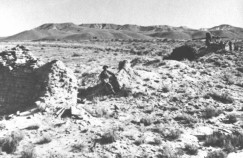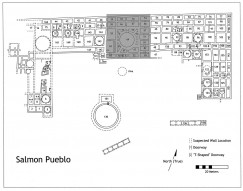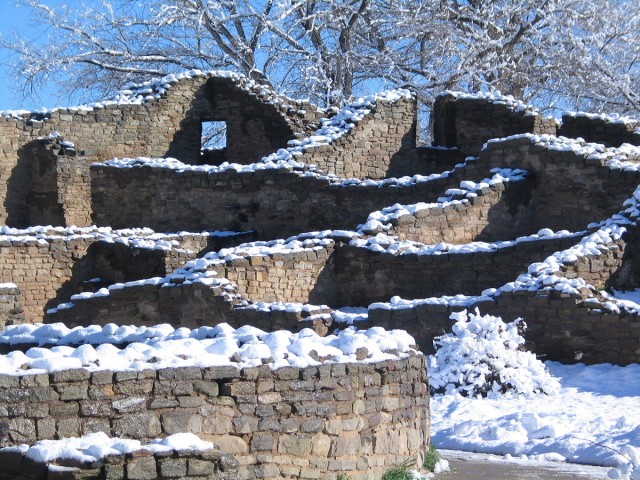- Home
- >
- Preservation Archaeology Blog
- >
- News from the North: A Burial from Salmon Pueblo a...

Host Scott Michlin recently welcomed me back to his morning radio show on KSJE, the San Juan College radio station in Farmington, New Mexico. I’m on with Scott every month to discuss interesting topics in local or national archaeology.
For November, I spoke about a recent email exchange I had with a curator at Yale University’s Peabody Museum regarding an unknown human burial, perhaps from Salmon Pueblo. (Note that the site is named for the Salmon family and is pronounced “Saul-mun.”) You can listen to our discussion here.
The email I received from the Yale Peabody curator described a burial from a site in the San Juan River valley, excavated by a local man in 1878. The man had a local contact who knew someone at the Peabody. Thus, the remains and a few grave goods were sent east.
Fast-forward 135 years…

I examined the handwritten letter from 1878 (and a typed copy), along with a sketch map showing a rough drawing of a site with the location from which the burial was taken. It took me only a few minutes to be certain that the site was indeed Salmon Pueblo. The clincher was the geographic description and plotted location relative to the early pioneer settlement of Junction City (later incorporated into Farmington, New Mexico).

Further examination led me to conclude that the burial came from the second story of Room 62 at Salmon, just adjacent to the Tower Kiva block. The 1878 map was so well drawn that I had little doubt as to the location.
Moving beyond the “rediscovery” from Salmon, Scott and I discussed the late Pueblo III period (1200s) at the site. Regarding abandonment, Scott wondered if the “great drought” theory still held sway among archaeologists. Speaking for myself, I said that its timing (A.D. 1273–1299) was late to have been the precipitating factor for Salmon’s abandonment and that of other sites in the region. Based ceramic evidence, it seems clear that Salmon’s population was on the move in the 1280s and perhaps gone from the site by 1285. Although the drought certainly had effects on the region, its worst years more than likely occurred after the site and region were depopulated.
Another reason to doubt the classic image of Pueblo people driven from the Four Corners by drought is found in the remains at Salmon Pueblo and Aztec’s West Pueblo. Both settlements had storage rooms that held large quantities—bushels!—of corn, both shelled and on the cob. People set fire to most of these corn caches as they abandoned the two pueblos. It seems very unlikely that the people leaving these sites were suffering from drought-induced hunger or starvation.

2 thoughts on “News from the North: A Burial from Salmon Pueblo and Some Thoughts on the Great Drought”
Comments are closed.
Even though the major drought was still to come, were there major changes in temperature preceding the drought, that may have been severe enough to let the population look for warmer areas?
Thanks for your comment.
The paleoclimatic data do not show any significant changes in temperature in the 1200s. After 1300, however, the region was colder for a number of decades.